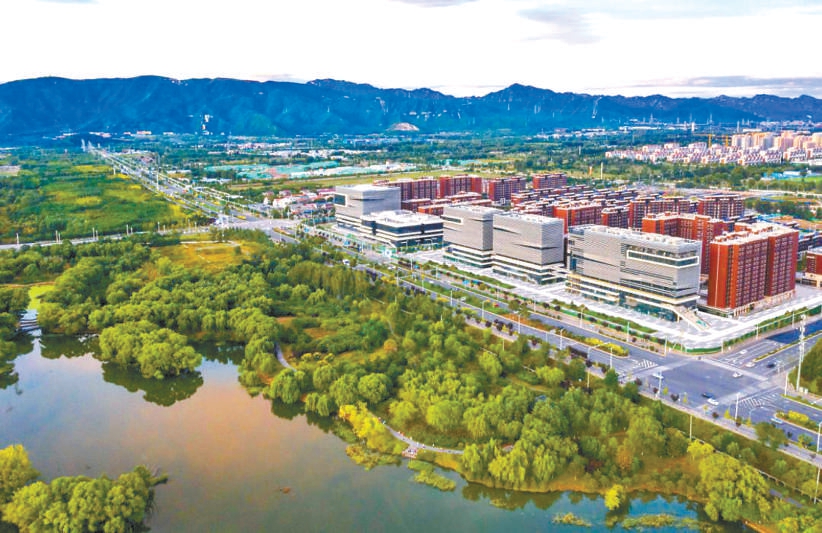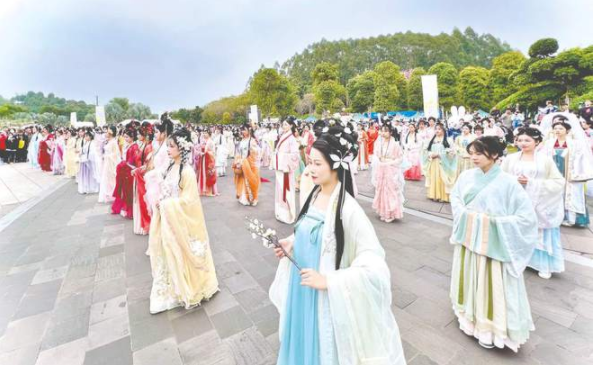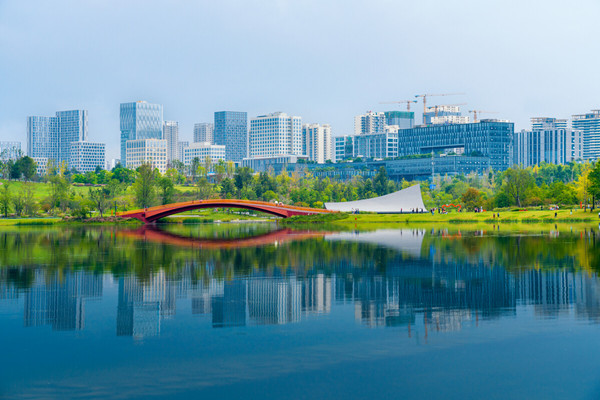泰国国立法政大学城市屋顶农场
项目名称:泰国国立法政大学城市屋顶农场(THAMMASAT UNIVERSITY URBAN ROOFTOP FARM)
项目位置:泰国巴吞他尼府
设计单位:Landprocess
场地总面积:60000㎡
绿色屋顶面积:22000㎡
项目状况:建造完成

在气候危机中,粮食和水资源短缺对人类文明构成巨大威胁。曼谷和整个东南亚地区的城市,曾经是粮食资源丰富的农业社会,现在却成了不受管制的城市化的受害者。农田变成了满是农药的工业化农场,生态系统被污染,完全不顾及公众健康和人民生活。
Amidst the climate crisis, food and water scarcity pose tremendous threats to human civilization. Once abundant agrarian societies rich with food sources, Bangkok and cities across Southeast Asia have become victims of unregulated urbanization on rice-producing regions. Agricultural lands have turned into pesticide-laden industrialized farms, polluting ecosystems with no regard for public health and people’s livelihood.
Landprocess再利用236806平方英尺的屋顶空间,帮助泰国国立法政大学设计并实施了亚洲最大的有机屋顶农场——泰国国立法政大学城市屋顶农场,同时也成为了一个有效的气候解决方案。结合现代景观建筑和传统梯田的农业独创性,为校园创造了一个包容性的循环经济,包括可持续食品生产、可再生能源、有机废物、水资源管理和公共空间。
Repurposing 236,806 sq. ft. of wasted rooftop space, the landscape architect helped Thammasat University envision and implement a climate solution with Asia’s largest organic rooftop farm—Thammasat Urban Rooftop Farm (TURF). Integrating modern landscape architecture with the agricultural ingenuity of traditional rice terraces, TURF creates an inclusive circular economy for the campus, incorporating sustainable food production, renewable energy, organic waste, water management and public space for all.

来自山上的梯田
RICE TERRACES FROM A MOUNTAIN
受到东南亚山区传统农业实践的独创性启发,景观设计师将梯田的土方工程与现代绿色屋顶技术相结合。236806平方英尺的层叠屋顶与传统的混凝土屋顶相比,减缓径流的效率可提高20倍。
Inspired by the ingenuity of traditional agricultural practices on mountainous terrains across Southeast Asia, TURF’s landscape architect integrated the earthwork of rice terraces with modern green roof technology. The 236,806 sq. ft. cascading rooftop can slow down runoff up to 20 times more efficiently than a conventional concrete rooftop.
随着雨水沿斜坡蜿蜒而下,每一层的屋顶都从之前的单元中收集径流,沿梯田形成独特的微型集水区,帮助吸收、过滤和净化雨水,同时为校园种植食物。在尽头,每个侧翼上都有四个蓄水池,可以达到3095570加仑的容量。这些水池大大减少了流出场地的雨水量,同时减轻了意外的洪水和干旱灾害。他们提出了一种解决方案,在强风暴期间储存多余的径流,以便在干旱期间使用。
As rainwater zigzags down the slopes, each level of TURF harvests runoff from the previous cell, forming unique clusters of micro-watersheds along the terrace to helping absorb, filter and purify rainwater while growing food for the campus. By the end of its journey, four retention ponds await on each wing, capable of holding up to 3,095,570 gallons of water once combined. These ponds significantly reduce the volume of stormwater leaving the site while mitigating unexpected flood and drought disasters. They present a solution to storing excessive runoff during intense storms for future use during dry spells.

在四个池塘中重复使用水,景观实现了对场地水的管理,以减少水对食品生产的影响。一个太阳能泵将储存起来的水向上推到屋顶进行灌溉。此外,水稻和蔬菜的层叠种植丰富了土壤的营养,减少了大雨期间流失的土壤。这可以防止被污染的径流以及通过空气传播的微粒毒素进入排水系统和自然水体。
Reusing restoring water at four retention ponds, the TURF manages on-site water management to minimize water footprint on food production. A solar-powered pump pushes stored water upward for roof irrigation. Furthermore, the cascading layers of rice and vegetable plantations enrich the soil’s nutrition, reducing the amount of soil mass lost during heavy rainfall. This prevents polluted runoff as well as particulate airborne toxins from entering drainage systems and natural water bodies.

用屋顶为人们提供食物
FEEDING PEOPLE FROM A SINGLE ROOFTOP
今天,城市化迅速消耗了农业用地,使食物来源进一步远离城市及其消费者。到2050年,全球80%的人口将居住在城市。为了确保全球粮食安全,并优先考虑人类和环境健康,城市必须利用被浪费的城市空间,以高效和可持续的方式生产粮食。
Today, urbanization has rapidly consumed agricultural lands, pushing food sources further away from cities and their consumers. By 2050, 80 percent of the world’s population will live in cities. To ensure global food security, and prioritize human and environmental health, cities must utilize wasted urban spaces to produce food efficiently and sustainably.
如今,泰国是世界五大农药进口国之一。集约化农业扩张,留下致命的化学有毒废弃物的痕迹。这片景观替代了75,300平方英尺的浪费空间,促进了可持续农业、作物多样性、小型农场系统以及营养的改善。
Today, Thailand ranks as one of the top five importers of pesticides in the world. Intensive monocrop agriculture continues to expand, scouring natural food sources and leaving trails of deadly chemical toxic waste behind. By replacing 75,300 sq. ft. of what would have been another wasted concrete rooftop with an urban organic farm, the TURF promotes sustainable agriculture, crop diversity, small farm systems as well as improved nutrition.

除了恢复城市生物多样性和气候异常,这座城市农场不仅为人们提供了食物,也为他们提供了营养。这里有40多种可食用的品种,包括TU学者培育的原始水稻品种、本地蔬菜和草本植物、果树以及其他品种,从耐水品种到抗旱品种应有尽有。每一个都适合独特的由光照、曲率和屋顶水流所创造的小气候。
In addition to restoring urban biodiversity and tackling forthcoming climate irregularities, the urban farm not only feeds people, but also nourishes them. A variety of 40 edible species—including an original rice strain bred by TU academics, indigenous vegetables and herbs, fruit trees and more—range from water-tolerant to drought-resistant. Each is suited to the unique microclimate created by the sunlight exposure, curvature and water flow of the roof’s elevation.
在场地下方下,是一个咖啡馆——也是校园和社区的绿色食堂,直接将农场的新鲜农产品供应到餐桌上。这里每年为社区提供多达20吨的有机食品,相当于每年13万顿饭。餐厅离屋顶农场很近,完成了可持续的食品生产系统,减少浪费和二氧化碳排放。在循环结束时,所有的有机废物都被回收作为堆肥,为下一个收获季节的作物施肥。
Beneath TURF, a café—a green canteen for the campus and community—serves fresh produce from the farm right to the table. TURF provides up to 20 tons of organic food to the community each year, equating to 130,000 meals annually. In close proximity to TURF, the canteen completes the holistic and sustainable food production system, reducing waste and CO2 emissions from start to finish. By the end of the cycle, all organic waste is recycled back as compost to fertilize crops for the next harvest.

用闲置的屋顶为社区供电
POWERING A COMMUNITY FROM AN UNUSED ROOFTOP
这所大学的绿色屋顶每小时可以产生50万瓦(相当于2.5万个电灯泡)的电力,它可以自己发电来灌溉城市农场,并为下面的建筑提供电力。38,373平方英尺的太阳能电池板覆盖了整个空间的16%,放置在屋顶的南侧,以持续暴露在阳光下。
Capable of producing up to 500,000 watts (an equivalent of 25,000 electric light bulbs) per hour, the University’s green roof can generate its own electricity to irrigate the urban farm and power the building beneath it. For optimal energy generation, the 38,373 sq. ft. of solar panels—covering 16 percent of the space—are placed on the roof's southern side for continuous exposure to sunlight.
随着绿色能源和被动冷却技术的出现,屋顶农场摆脱了对化石燃料的依赖。通过冷却建筑内外的空气,它减少了与空调相关的能源消耗产生的温室气体排放,也提高了保温性能,为建筑保持凉爽的温度。
With green power and passive cooling, TURF pivots away from reliance on fossil fuels. By cooling air both inside and outside the building, it reduces greenhouse gas emissions from energy consumption related to air conditioning and also improves insulation to retain a cool temperature for building.

层叠屋顶用作公共空间
CASCADING ROOF AS PUBLIC SPACE
通过在多山的建筑中进行操作,并最大限度地利用其倾斜的表面,项目利用地形的每一层来创建多功能的公共空间。斜坡上12个单独设计的区域作为椭圆形的室外教室,而沿着楼梯分布的小口袋空间则提供了亲密的社交空间和通向农作物的通道。爬到顶部的人可以360度俯瞰曼谷全景。一个大型圆形剧场为所有游客提供了一个可达且灵活多变的娱乐教育空间。
By carving into the mountainous architecture and maximizing the use of the inclined surface, TURF utilizes every level of the terrain to create multi-functional public spaces. Twelve individually designed areas on the slopes serve as oval-shaped outdoor classrooms, while small pockets dispersed along the staircases provide intimate social spaces and access to the crops. TURF rewards those who climb to the top with a 360-degree panoramic view of the Bangkok centered in an urban farm and under the open sky. A large amphitheater provides an accessible and flexible recreational and educational space for all visitors.
当茂盛的绿色变成干棕色,屋顶农场成为一个现实的、充满希望的解决方案,让现代城市居民回到祖先的农业实践。景观设计师受到当地独创性的启发,实施了一种整体方法。就像几代农民从土地和水中学习,屋顶农场项目秉承泰国文化历史、风景,为社区和城市建设者提供机会学习如何适应并接受在建设可持续城市时气候的挑战。
As lush green turns to dry brown, TURF is a realistic, but hopeful solution that puts modern urban dwellers back in tune with ancestral agricultural practices. The landscape architect implemented a holistic approach inspired by local ingenuity. Carried on through several generations of farmers who learned from the land and water they lived with—TURF holds with it the history of Thai culture, landscape and native soil, embedded as lessons to communities and city builders on how to adapt to and embrace climate challenges in building the sustainable cities of the future.





编辑:王子悦
相关阅读
江苏扬州:今年实施五大攻坚行动提升城市绿化
城市道路绿化增绿行动。利用今年春季绿化黄金季节,针对城市道路绿化达标率、林荫路覆盖率等指标,全面开展道路绿化增绿提绿补绿,重点对87条道路的行道树“有绿无荫、有景少荫”、绿化品种单一等问题进行整改,形成配置合理、错落有致、层次清晰的道路绿化景观【详细】
北京昌平新城东区将打造滨水商业消费新地标
昌平新城东区位于昌平区南邵镇,规划建设用地面积11平方公里,规划人口12万,围绕打造首都北部消费新地标编织街区控规已获批。未来,昌平新城东区将打造成为京北体验消费示范区、山水宜居典范城区、高水平综合服务承载区和智慧产研创新园区【详细】
南宁园博园举办“礼乐园博·南宁花朝盛典”
活动期间,南宁园博园还举办了汉服新秀大赛、同袍巡游、及笄成人礼、国风婚礼妆照展示、明制婚礼仪式典礼、六艺游园、书画体验、国风集市等精彩纷呈的活动,同时邀请众多知名国风模特参与表演展示【详细】
成都首届“最美公园”评选结果出炉
据成都市公园城市建设管理局相关负责人介绍,本次“最美公园”评选范围包括23个区(市)县已建成开放的1514个公园,包括综合公园、口袋公园,还有郊野公园【详细】





